Possibly, I may do a quick chapter about it starting to ally with Russia and Qing China in the aftermath of the Japan Invasion to modernise quickly and to avoid Invasion from Nippon and America but quickly realising that by trusting the Tsar they are dooming themselves. During the Chinese Civil War the Koreans send troops to support Qing China and gain experience in modern warfare which they use to help plan against a Nippon Invasion.will someone be doing a chapter on Korea and it going mad?
You are using an out of date browser. It may not display this or other websites correctly.
You should upgrade or use an alternative browser.
You should upgrade or use an alternative browser.
The Star-Spangled Expanded Universe of "What Madness Is This?"
- Thread starter Napoleon53
- Start date
will they also start making a mad version of Korean Christianity and it starts spreading and making Korea more theocratic?Possibly, I may do a quick chapter about it starting to ally with Russia and Qing China in the aftermath of the Japan Invasion to modernise quickly and to avoid Invasion from Nippon and America but quickly realising that by trusting the Tsar they are dooming themselves. During the Chinese Civil War the Koreans send troops to support Qing China and gain experience in modern warfare which they use to help plan against a Nippon Invasion.
Possibly, I can see the Tsar's weird version of Christianity and Buddhism clashing for popularity whilst the remaining Catholics in Korea find themselves being more and more persecuted leading to an exodus as they eventually try and travel to more Catholic friendly Macau. However this is a possibility,nothing is fully formed yet.will they also start making a mad version of Korean Christianity and it starts spreading and making Korea more theocratic?
Any thoughts about my religion post, @Time Enough , @Napoleon53 ?
(hate to @ people on this, but it's the last post on page 9 so might get missed)
(hate to @ people on this, but it's the last post on page 9 so might get missed)
Looks interesting, I like the odder ones like the Church of Christ, Universal and Triumphant. I like the fact that in your Reverse world there isn't just a couple of religions but a larger variety. Good WorkAny thoughts about my religion post, @Time Enough , @Napoleon53 ?
(hate to @ people on this, but it's the last post on page 9 so might get missed)
I was going for a "as weird and crazy as the RU/NUSA, but friendly and kind instead of an insane war cult".Looks interesting, I like the odder ones like the Church of Christ, Universal and Triumphant. I like the fact that in your Reverse world there isn't just a couple of religions but a larger variety. Good Work
I also considered adding a cargo cult similar to the Prince Phillip Movement of OTL that worships NUSA war hero Abe Lincoln Murphy, but couldn't figure out a way to fit that in.
I was going for a "as weird and crazy as the RU/NUSA, but friendly and kind instead of an insane war cult".
That's exactly what I thought of when I read it. They're all kinda weird (I would even say some are kooky) but in a "Hey, Christ put us here to uplift all mankind into one beautiful society" way rather than a "We Shall Build a Pure New Jerusalem through Blood and Iron" kind of deal.
If any people re-read the 2nd Chapter of the Boots saga you will notice that the photo for Anya Jerome-Boot has been changed to a picture of Leonie Blanche Jerome and her back story has changed slightly (So I'm not treading on Napo's toes). Anyway I have ideas for the next chapter but I'm waiting for Napo to finish the Great War first before writing it, but I thought I might as well post my ideas for what I think the next generation of the Boot family will look like:

Herman Boot and his wife Ada
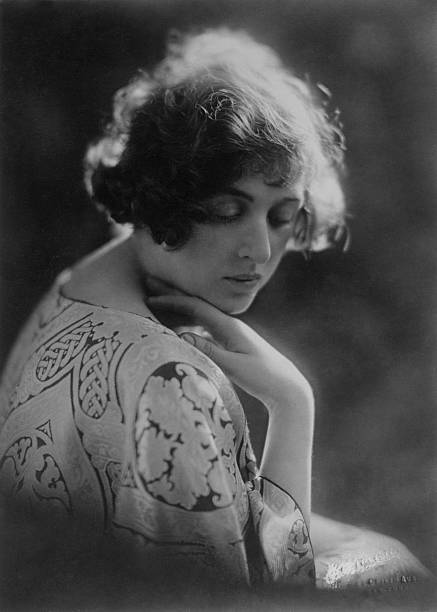
Sofia Boot-Hayakawa

Sessue Boot-Hayakawa

Freida Boot
I have crazy ideas for what happens to them, Herman Boot as an Indiana Jones style explorer and archaeologist, Sofia Boot and her husband Sessue Hayakawa becoming an artistic power couple and Freida Boot making Boots more powerful than it ever was and bring Social Capitalism as an idea kicking and screaming into the 20th Century.

Herman Boot and his wife Ada

Sofia Boot-Hayakawa

Sessue Boot-Hayakawa

Freida Boot
So, any ideas for the Japanese offshoot of the AFC I'm planning? I imagine they'll be influenced by the Witnesses, but I'm not sure about polygamy. Any sources of inspiration are helpful.
I'm also going to try and expand on the Witnesses themselves and maybe some other weird beliefs they have.
I'm also going to try and expand on the Witnesses themselves and maybe some other weird beliefs they have.
Instead of polygamy the Japanese use concubines, every man has one wife (whose often rather young) whose job it is to look after the house and care for the children but they use concubines to produce children to increase the chance of survival and also to increase family status. The more concubines you have the higher you are in status.So, any ideas for the Japanese offshoot of the AFC I'm planning? I imagine they'll be influenced by the Witnesses, but I'm not sure about polygamy. Any sources of inspiration are helpful.
I'm also going to try and expand on the Witnesses themselves and maybe some other weird beliefs they have.
So, any ideas for the Japanese offshoot of the AFC I'm planning? I imagine they'll be influenced by the Witnesses, but I'm not sure about polygamy. Any sources of inspiration are helpful.
I'm also going to try and expand on the Witnesses themselves and maybe some other weird beliefs they have.
I was to mention that, alongside the ooku the tokugawa used to have, so is pausable....Instead of polygamy the Japanese use concubines, every man has one wife (whose often rather young) whose job it is to look after the house and care for the children but they use concubines to produce children to increase the chance of survival and also to increase family status. The more concubines you have the higher you are in status.
https://en.wikipedia.org/wiki/Aum_Shinrikyo
These folks are definitely going to be an influence..... They might even influence violent attacks made by the Japanese branch of the AFC
These folks are definitely going to be an influence..... They might even influence violent attacks made by the Japanese branch of the AFC
Oh boy, You will need a charismatic leader with a big ego and maybe you should add some Buddhist ideas into the AFC mix which causes it to attract a number of former Buddhists. Also they become a major AFC cult by murdering the leaders of other AFC cults.https://en.wikipedia.org/wiki/Aum_Shinrikyo
These folks are definitely going to be an influence..... They might even influence violent attacks made by the Japanese branch of the AFC
This is my first entry into the expanded universe thread for this new version of the Madnessverse. A wrote a lot about the Middle East for the original Madness timeline in some guest chapters, so I figured why not write about the Middle East is this new version of the timeline?
Anyways, enjoy!
Iraq: A History
Part One: Origins
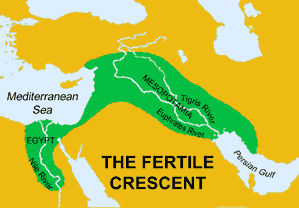
The land that makes up the modern-day Kingdom of Iraq has a long and storied history stretching back to the very beginning of human civilization as we know it, said human civilization having its origins in the area of the fertile crescent, which included a region known as Mesopotamia, a region located between the Tigris and Euphrates rivers in modern-day Iraq. In this region arose the first known human civilization, the Sumerians. Then came other ancient civilizations and cultures, both indigenous, such as the Akkadians, the Babylonians and the Assyrians, and foreign, such as the Persians and the Romans. In the seventh century, with the life of Muhammad and the rise of the religion of Islam, the Arabs came to Mesopotamia, and numerous Arabic and Islamic dynasties and kingdoms followed through the centuries. It was also during this time that Iraq saw invasions from abroad, most famously the Mongol invasion and siege of Baghdad in 1258, after which followed Mongol and then Turco-Mongol rule. After that, in the 16th century, came the Turks and the Ottoman Empire. The rest, as they say, is history.
The modern-day nation of the Kingdom of Iraq has its origins in the fall of the Ottoman Empire and the war that led directly to the fall of the Ottoman Empire, the Imperial-Ottoman War (1855-1857), known by some historians as the “Tenth Crusade.” The Iraqi War of Independence (March 29, 1956-November 16, 1856), which coincided with the Imperial-Ottoman War, was led by principally by the Mamluk dynasty of Iraq, the Mamluk elites of Iraq and their numerous supporters in the middle and lower classes of Iraq, which consisted of mostly of ethnic Arabs who were both Sunni Muslims and Shia Muslims, united in their disdain towards the Ottoman Turks in spite of their many theological differences.
To get into some important historical context, the word Mamluk (مملوك) is a word in the Arabic language meaning "property" and was also historically used in the Arabic language as another word for slave. Throughout the history of the Islamic World, the term has been used to refer to Muslim slave soldiers and Islamic rulers who were originally slaves. There were numerous Mamluk dynasties throughout the history of the Islamic world, the most famous of which was the Mamluk Dynasty that ruled Egypt from 1250–1517.
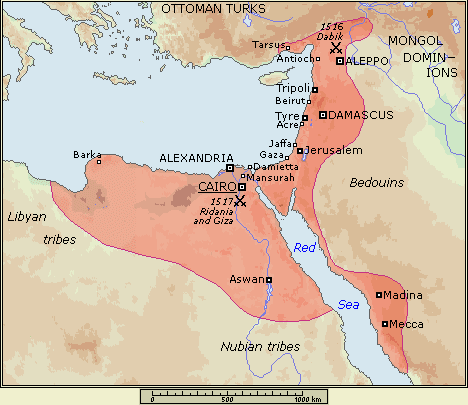
Map of the Mamluk Sultanate of Egypt at its Zenith
The Mamluk dynasty of Iraq, descended from slave soldiers in the Ottoman Army of mostly ethnically Georgian origin who had converted from Christianity to Islam, began their autonomous rule over most of modern-day Iraq in 1704 after these Mamluks asserted their autonomy within the Ottoman Empire. The Maluk dynasty in Iraq would maintain their autonomy for the next 151 years. An attempt by the Ottoman Empire to depose the Mamluks in 1831 failed after upon the announcement of this measure numerous riots broke out in Baghdad, Mosul and other major cities in the region, further straining relations between the Iraqi Mamluks and the Ottoman central government in Istanbul [1]. In 1855, the leader of the Mamluk dynasty of Iraq was Dawud Pasha, who despite being eighty-eight years of age at the time, was of solid mind and more than capable of planning and leading the people of Iraq through revolt and eventual independence. With the outbreak of the Imperial-Ottoman War on September 12, 1855 and with tensions having increased evermore between the Iraqi Mamluks and the Ottoman government for the past two decades, Dawud Pasha, many in the Mamluk elite and other local Arab intellectuals sensed the time was right to plan for a revolt to free the region, which many locals and foreigners alike began to call "Iraq", from Ottoman rule once and for all.

Map of the Ottoman Eyalets under the control of the Iraqi Mamluks
The Iraqi War of Independence, also known as the Iraqi Revolution, began on the morning of March 22, 1856, when, during the ongoing Imperial Siege of Jerusalem, the Mamluk Dynasty of Iraq and their numerous supporters, led by the aforementioned Dawud Pasha with the help of other, younger members of the Mamluk elite of Iraq, after months of hoarding weapons, recruiting members of the sympathetic public into their conspiracy and secretly planning a rebellion since the beginning of the Imperial-Ottoman War back in September of 1855, began a number of riots in a number of different parts of Baghdad and then, by the afternoon, rose in a full-fledged revolt throughout the city of Baghdad and its surrounding areas, attacking numerous Ottoman garrisons and government buildings. With most of the Ottoman armies and soldiers on the front-lines in Palestine and Syria fighting against the invading Imperial armies, the skeleton forces of Ottoman infantrymen in Bagdad, consisting mostly of ethnic Turks and some Arabs from outside the region of Iraq, were poorly equipped to deal with any kind of large scale rebellion, let alone numerous smaller riots. After some brief skirmishes in Baghdad between the Iraqi rebels and the Ottoman infantrymen, the remaining infantrymen in the Ottoman garrison surrendered to the Mamluk-led Iraqi rebels and were subsequently imprisoned in a number of local prisons and barracks in and around the city. The Baghdad Uprising resulted in about 110 dead rebels and about 300 dead Ottoman infantrymen.
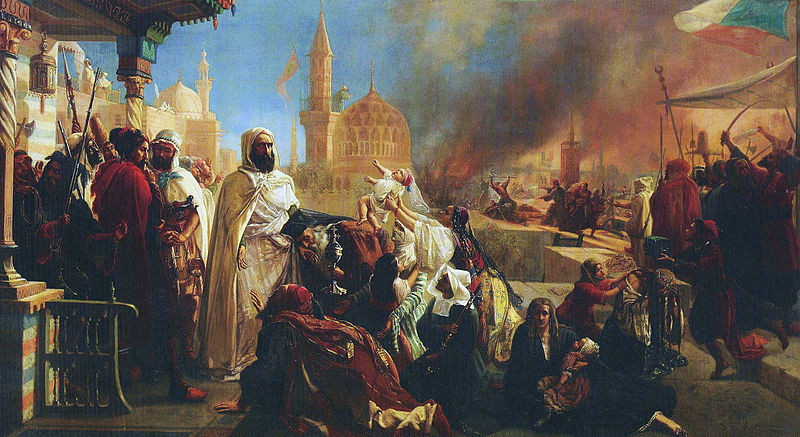
A Romanticized depiction of the Baghdad Rebellion, painted by the Flemish-French painter Jean Baptiste Huysmans, 1862. The man with the beard dressed in white is supposed to represent Dawud Pasha, and the men at his feet represent the Muslims, Christians and Jews of Baghdad appealing to him for leadership.
In the aftermath of the Baghdad Uprising and the fall of Baghdad, a new Arab and Iraqi national conciseness was beginning to emerge, and riots in support of Iraqi independence from the Ottoman Empire, led mostly by local leaders and members of the middle class, broke out in numerous large Iraqi cities such as Mosul, Kirkuk, Samarra, Ramadi, Nasiriyah, Rutba and Fallujah. Meanwhile, back in Bagdad, Dawud Pasha began the establishment and training of new armies, one army for the defense of Baghdad and another two armies for the support of other rebellions in other Iraqi cities and to offensively attack the Ottoman armies if necessary. The principal leader of the new armies of Iraq was an ethnically Arab former general in the Ottoman Army by the name of Saddam Saab, a native of Baghdad and a staunch supporter of Iraqi and Arab independence from the Ottoman Turks [2].
Saddam Saab was born in 1815 into a moderately wealthy Arab and Sunni Muslim middle class family in the heart of Baghdad. The Saab family was a family whose fortune was made in numerous different local trades, such as textile weaving, glass burning, book printing, farming, horse breeding, among others. In 1833, after reaching adulthood, the young Saab, bored with his life in Baghdad and not wanting to inherit any of his father's or uncles' businesses, ran away from home by stealing an Arabian horse from one of his uncles and riding out of the city. In the nearby city of of Tekrit, Saab joined a trade caravan and then made his way to the Holy City of Jerusalem, known in Arabic as Al-Quds. In Jerusalem, Saab, wanting to see more of the vast and diverse Ottoman Empire, decided to join the infantry of the Ottoman Army. Throughout the 1830s and 1840s, Saab was stationed throughout the Ottoman regions of Palestine, Mesopotamia, Anatolia and the Balkans. By 1845, Saab had achieved the rank of Colonel, mostly through favoritism and through doing favors for his superiors, such as infiltrating numerous nationalist conspiracies, be they amongst the Arabs of Palestine and Syria, the Druze, the Maronites or the Armenians, which was ironic given his future role in the Iraqi War of Independence, and it was also something which he would come to regret in later years as a direct result. In 1843, with the beginning of the Balkan Wars of Independence, Colonel Saab, only twenty-eight years-old, finally began to make a name for himself and in the subsequent years, became famous for his numerous campaigns during the Balkan Wars against the Greek, Serbian, Montenegrin, Albanian and Bulgarian rebels, so much so that he achieved the rank of General in 1848 at only thirty-three years of age. He gained the reputation as a strict but noble general, and he always treated his Balkan enemies with dignity. For example, on numerous occasions, he would offer truces to retrieve the dead of both sides after a battle, and he always treated his Greek, Serbian, Montenegrin, Albanian and Bulgarian prisoners of war with respect and fed and clothed them as well as he could. He also respected the Christian sensibilities of his prisoners, and he even gifted some of his prisoners Orthodox Crucifixes found on battlefields or in ransacked churches. After the Ottoman Turks were kicked out of the Balkans for good in 1852, General Saab accepted a posting in Baghdad and then reunited with his parents and the surviving members of his family, who, despite their anger at this running away so many years before, were very much impressed with his numerous adventures, chivalry and military heroism, which at that point had been known about by most within the major cities of the empire.

Saddam Saab (May 26, 1815-November 24, 1887), Circa 1855
On the afternoon of March 23, 1856, the independence of the Kingdom of Iraq was officially proclaimed by both Dawud Pasha and General Saddam Saab in front of Al-Mustansiriya University in Baghdad, which was founded by the Abbasid Caliph Al-Mustansir in 1227, and as a result was one of the oldest and most prestigious universities in the city. Dawud Pasha also proclaimed himself to be the King of Iraq under the name of King Dawud I of Iraq. Soon after the proclamation of Iraqi independence, the new makeshift Iraqi government sent a number of envoys to the Imperial armies stationed in Palestine and Egypt and asked for Iraq to have a nonaggression pact and military alliance with the Franco-Spanish Empire and the personal goodwill of Caesar Napoleon II. They envoys also promised that the army of Iraq would do what it could to fight the remaining Ottoman armies in Palestine. After personally meeting with these Iraqi envoys, Caesar Napoleon II agreed to their terms. As a result, the newly established Kingdom of Iraq became an ally of the Franco-Spanish Empire in the Imperial-Ottoman War. As a side note, the fact that a burgeoning Muslim nation fought with a Christian power against the Muslim Ottoman Empire, whom many of the Arab Iraqis, especially the Shittes, viewed as a false Islamic caliphate, somewhat undermined the argument of the Imperial-Ottoman War being a "Tenth Crusade."
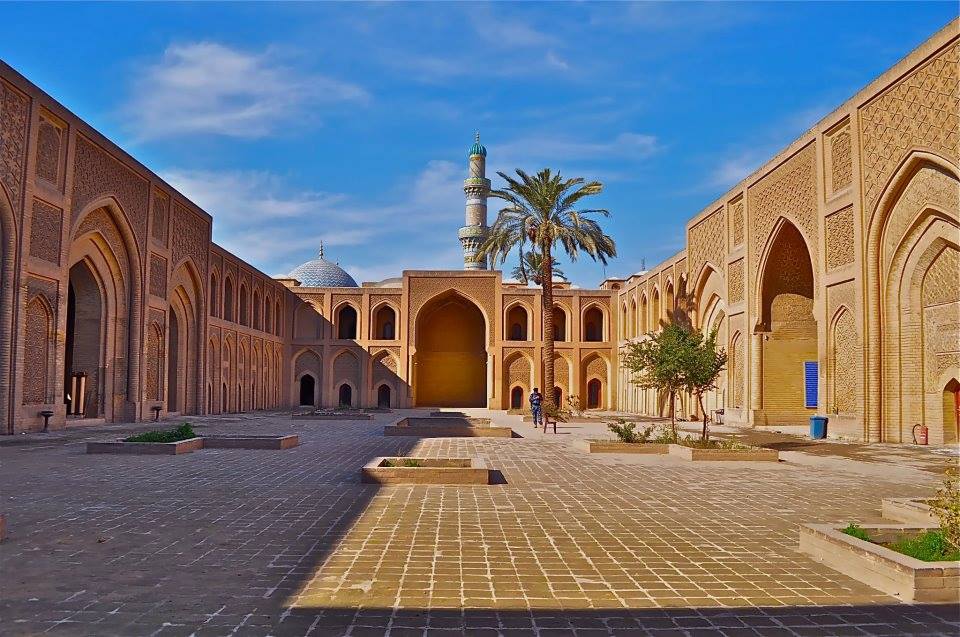
Al-Mustansiriya University
On April 3, 1856, the hastily mobilized Iraqi Army, led by General Saddam Saab and including many Arab defectors from the Ottoman Army, quickly marched out of the city of Rutba and after a long march then smashed into the surprised and unprepared Ottoman armies in eastern Palestine. After a series of short but bloody engagements, the Iraqi armies quickly routed the Ottoman armies. In episodes that showed the darker side of the war, some in the Iraqi armies, so angry and resentful with their lives under Turkish rule, butchered the Turkish garrisons of a number of towns. Often times, the pleas of Turkish soldiers wanting to surrender were ignored with these men executed in cold blood. These outrages, while relatively rare, were strictly forbidden by General Saab, and those who participated in these outrages were punished harshly, discharged and/or executed on his personal orders. After the fall of Jerusalem on April 10, 1856, King Dawud I and General Saddam Saab began a large scale restructuring of the Iraqi Army and a consolidation of the towns, villages and other territories now under the control of the Kingdom of Iraq, and the Iraqi Army swiftly consolidated control over the lands now under the nation’s domain. The remaining Ottoman loyalists, mostly Turks, quickly fled into the remaining Ottoman land in Anatolia. With the rebellion against the Ottoman Empire in Armenia, Iraq under Dawud I became the first nation to recognize Armenia as an independent nation. On May 10, 1856, the first flag of the Kingdom of Iraq was adopted by the Iraqi government and was flown proudly over Al-Mustansiriya University, the temporary seat of the Iraqi government. The flag was designed personally by General Saddam Saab in October, 1855, during the planning of the Baghdad Rebellion.

The Iraqi cavalry and infantry smash into the Ottoman armies outside of Jericho in Palestine, April, 1856

The first flag of the Kingdom of Iraq, adopted on May 10, 1856. These colors, white, black, green and red, would later became the Pan-Arab colors.
On November 16, 1856, after the proclamation of the Islamic Republic of Turkey in Ankara, and the subsequent Kurdistan rebellion, after 557 years, the Ottoman Empire was no more, and the new nation of Iraq entered into a new era of consolidating its independence, maintaining almost draconian control over its territory and hunting down bandits, brigands and the remnants of the Ottoman Army. In regards to the latter, the last Ottoman Army remnants surrendered to the Iraqi army and government by June of 1857 and ceased their banditry and other criminal activities. During the Kurdistan Rebellion, General Saab wanted to support the Kurdish rebels in an effort to undermine the Islamic Republic of Turkey, but Iraq had a weak, small and only recently established army with mostly outdated weapons from old Ottoman Army stores, and as a result could not afford to assist the Kurds in any meaningful way. Thus, the Kurdistan Rebellion failed and much of the Kurdish people would be under the oppressive boot of the Islamic Republic of Turkey for decades to come. One important aspect of the first years or Iraqi self-rule was the government’s promotion of national and patriotic unity within the nation, especially between those of the Sunni and Shia Islamic sects, whose members were united in their hatred of the Ottoman Empire, but had many members who still largely disliked each other even after so many centuries due to numerous theological differences, similar to the hostiles between Catholics (the main Catholic power being the Franco-Spanish Empire and then Europa), Protestants (the main Protestant power being the Nordreich), and the Orthodox (the main Orthodox power being the Russian Empire) Christians of Europe.
Only a year and a half after the independence of the Kingdom of Iraq, Dawud I died of natural causes in his temporary residence in the old Al-Mustansiriya University in Baghdad on September 24, 1857 at the age of 89 or 90 (his date of birth in 1767 is uncertain). His eldest son named Abdullah Pasha, born on June 8, 1801, became the new King of Iraq under the name of King Abdullah I of Iraq. His coronation ceremony, the first proper coronation ceremony in the history of the Iraq, took place on January 1 (New Year's Day), 1858. It was under the reign of King Abdullah I that Iraq, while still not a major regional power by any means, truly came into its own as an independent nation.

King Abdullah I of Iraq (June 8, 1801-September 9, 1879)
~~~~~~
[1] IOTL the Ottoman Empire was successful in removing the autonomy of the Mamluk dynasty in Iraq in 1831. The Ottoman Empire is unsuccessful in doing so IITL because both the First Egyptian-Ottoman War (1831-1833) and the Second Egyptian-Ottoman War (1839-1841) did not occur ITTL.
[2] Saddam Saab was a character from Napoleon's other timeline, American King II. I decided to have him in What Madness is This? V.1, so I also decided to have him in What Madness is This? V.2.
Anyways, enjoy!
Iraq: A History
Part One: Origins

The modern-day nation of the Kingdom of Iraq has its origins in the fall of the Ottoman Empire and the war that led directly to the fall of the Ottoman Empire, the Imperial-Ottoman War (1855-1857), known by some historians as the “Tenth Crusade.” The Iraqi War of Independence (March 29, 1956-November 16, 1856), which coincided with the Imperial-Ottoman War, was led by principally by the Mamluk dynasty of Iraq, the Mamluk elites of Iraq and their numerous supporters in the middle and lower classes of Iraq, which consisted of mostly of ethnic Arabs who were both Sunni Muslims and Shia Muslims, united in their disdain towards the Ottoman Turks in spite of their many theological differences.
To get into some important historical context, the word Mamluk (مملوك) is a word in the Arabic language meaning "property" and was also historically used in the Arabic language as another word for slave. Throughout the history of the Islamic World, the term has been used to refer to Muslim slave soldiers and Islamic rulers who were originally slaves. There were numerous Mamluk dynasties throughout the history of the Islamic world, the most famous of which was the Mamluk Dynasty that ruled Egypt from 1250–1517.

Map of the Mamluk Sultanate of Egypt at its Zenith
The Mamluk dynasty of Iraq, descended from slave soldiers in the Ottoman Army of mostly ethnically Georgian origin who had converted from Christianity to Islam, began their autonomous rule over most of modern-day Iraq in 1704 after these Mamluks asserted their autonomy within the Ottoman Empire. The Maluk dynasty in Iraq would maintain their autonomy for the next 151 years. An attempt by the Ottoman Empire to depose the Mamluks in 1831 failed after upon the announcement of this measure numerous riots broke out in Baghdad, Mosul and other major cities in the region, further straining relations between the Iraqi Mamluks and the Ottoman central government in Istanbul [1]. In 1855, the leader of the Mamluk dynasty of Iraq was Dawud Pasha, who despite being eighty-eight years of age at the time, was of solid mind and more than capable of planning and leading the people of Iraq through revolt and eventual independence. With the outbreak of the Imperial-Ottoman War on September 12, 1855 and with tensions having increased evermore between the Iraqi Mamluks and the Ottoman government for the past two decades, Dawud Pasha, many in the Mamluk elite and other local Arab intellectuals sensed the time was right to plan for a revolt to free the region, which many locals and foreigners alike began to call "Iraq", from Ottoman rule once and for all.

Map of the Ottoman Eyalets under the control of the Iraqi Mamluks
The Iraqi War of Independence, also known as the Iraqi Revolution, began on the morning of March 22, 1856, when, during the ongoing Imperial Siege of Jerusalem, the Mamluk Dynasty of Iraq and their numerous supporters, led by the aforementioned Dawud Pasha with the help of other, younger members of the Mamluk elite of Iraq, after months of hoarding weapons, recruiting members of the sympathetic public into their conspiracy and secretly planning a rebellion since the beginning of the Imperial-Ottoman War back in September of 1855, began a number of riots in a number of different parts of Baghdad and then, by the afternoon, rose in a full-fledged revolt throughout the city of Baghdad and its surrounding areas, attacking numerous Ottoman garrisons and government buildings. With most of the Ottoman armies and soldiers on the front-lines in Palestine and Syria fighting against the invading Imperial armies, the skeleton forces of Ottoman infantrymen in Bagdad, consisting mostly of ethnic Turks and some Arabs from outside the region of Iraq, were poorly equipped to deal with any kind of large scale rebellion, let alone numerous smaller riots. After some brief skirmishes in Baghdad between the Iraqi rebels and the Ottoman infantrymen, the remaining infantrymen in the Ottoman garrison surrendered to the Mamluk-led Iraqi rebels and were subsequently imprisoned in a number of local prisons and barracks in and around the city. The Baghdad Uprising resulted in about 110 dead rebels and about 300 dead Ottoman infantrymen.

A Romanticized depiction of the Baghdad Rebellion, painted by the Flemish-French painter Jean Baptiste Huysmans, 1862. The man with the beard dressed in white is supposed to represent Dawud Pasha, and the men at his feet represent the Muslims, Christians and Jews of Baghdad appealing to him for leadership.
In the aftermath of the Baghdad Uprising and the fall of Baghdad, a new Arab and Iraqi national conciseness was beginning to emerge, and riots in support of Iraqi independence from the Ottoman Empire, led mostly by local leaders and members of the middle class, broke out in numerous large Iraqi cities such as Mosul, Kirkuk, Samarra, Ramadi, Nasiriyah, Rutba and Fallujah. Meanwhile, back in Bagdad, Dawud Pasha began the establishment and training of new armies, one army for the defense of Baghdad and another two armies for the support of other rebellions in other Iraqi cities and to offensively attack the Ottoman armies if necessary. The principal leader of the new armies of Iraq was an ethnically Arab former general in the Ottoman Army by the name of Saddam Saab, a native of Baghdad and a staunch supporter of Iraqi and Arab independence from the Ottoman Turks [2].
Saddam Saab was born in 1815 into a moderately wealthy Arab and Sunni Muslim middle class family in the heart of Baghdad. The Saab family was a family whose fortune was made in numerous different local trades, such as textile weaving, glass burning, book printing, farming, horse breeding, among others. In 1833, after reaching adulthood, the young Saab, bored with his life in Baghdad and not wanting to inherit any of his father's or uncles' businesses, ran away from home by stealing an Arabian horse from one of his uncles and riding out of the city. In the nearby city of of Tekrit, Saab joined a trade caravan and then made his way to the Holy City of Jerusalem, known in Arabic as Al-Quds. In Jerusalem, Saab, wanting to see more of the vast and diverse Ottoman Empire, decided to join the infantry of the Ottoman Army. Throughout the 1830s and 1840s, Saab was stationed throughout the Ottoman regions of Palestine, Mesopotamia, Anatolia and the Balkans. By 1845, Saab had achieved the rank of Colonel, mostly through favoritism and through doing favors for his superiors, such as infiltrating numerous nationalist conspiracies, be they amongst the Arabs of Palestine and Syria, the Druze, the Maronites or the Armenians, which was ironic given his future role in the Iraqi War of Independence, and it was also something which he would come to regret in later years as a direct result. In 1843, with the beginning of the Balkan Wars of Independence, Colonel Saab, only twenty-eight years-old, finally began to make a name for himself and in the subsequent years, became famous for his numerous campaigns during the Balkan Wars against the Greek, Serbian, Montenegrin, Albanian and Bulgarian rebels, so much so that he achieved the rank of General in 1848 at only thirty-three years of age. He gained the reputation as a strict but noble general, and he always treated his Balkan enemies with dignity. For example, on numerous occasions, he would offer truces to retrieve the dead of both sides after a battle, and he always treated his Greek, Serbian, Montenegrin, Albanian and Bulgarian prisoners of war with respect and fed and clothed them as well as he could. He also respected the Christian sensibilities of his prisoners, and he even gifted some of his prisoners Orthodox Crucifixes found on battlefields or in ransacked churches. After the Ottoman Turks were kicked out of the Balkans for good in 1852, General Saab accepted a posting in Baghdad and then reunited with his parents and the surviving members of his family, who, despite their anger at this running away so many years before, were very much impressed with his numerous adventures, chivalry and military heroism, which at that point had been known about by most within the major cities of the empire.
Saddam Saab (May 26, 1815-November 24, 1887), Circa 1855
On the afternoon of March 23, 1856, the independence of the Kingdom of Iraq was officially proclaimed by both Dawud Pasha and General Saddam Saab in front of Al-Mustansiriya University in Baghdad, which was founded by the Abbasid Caliph Al-Mustansir in 1227, and as a result was one of the oldest and most prestigious universities in the city. Dawud Pasha also proclaimed himself to be the King of Iraq under the name of King Dawud I of Iraq. Soon after the proclamation of Iraqi independence, the new makeshift Iraqi government sent a number of envoys to the Imperial armies stationed in Palestine and Egypt and asked for Iraq to have a nonaggression pact and military alliance with the Franco-Spanish Empire and the personal goodwill of Caesar Napoleon II. They envoys also promised that the army of Iraq would do what it could to fight the remaining Ottoman armies in Palestine. After personally meeting with these Iraqi envoys, Caesar Napoleon II agreed to their terms. As a result, the newly established Kingdom of Iraq became an ally of the Franco-Spanish Empire in the Imperial-Ottoman War. As a side note, the fact that a burgeoning Muslim nation fought with a Christian power against the Muslim Ottoman Empire, whom many of the Arab Iraqis, especially the Shittes, viewed as a false Islamic caliphate, somewhat undermined the argument of the Imperial-Ottoman War being a "Tenth Crusade."

Al-Mustansiriya University
On April 3, 1856, the hastily mobilized Iraqi Army, led by General Saddam Saab and including many Arab defectors from the Ottoman Army, quickly marched out of the city of Rutba and after a long march then smashed into the surprised and unprepared Ottoman armies in eastern Palestine. After a series of short but bloody engagements, the Iraqi armies quickly routed the Ottoman armies. In episodes that showed the darker side of the war, some in the Iraqi armies, so angry and resentful with their lives under Turkish rule, butchered the Turkish garrisons of a number of towns. Often times, the pleas of Turkish soldiers wanting to surrender were ignored with these men executed in cold blood. These outrages, while relatively rare, were strictly forbidden by General Saab, and those who participated in these outrages were punished harshly, discharged and/or executed on his personal orders. After the fall of Jerusalem on April 10, 1856, King Dawud I and General Saddam Saab began a large scale restructuring of the Iraqi Army and a consolidation of the towns, villages and other territories now under the control of the Kingdom of Iraq, and the Iraqi Army swiftly consolidated control over the lands now under the nation’s domain. The remaining Ottoman loyalists, mostly Turks, quickly fled into the remaining Ottoman land in Anatolia. With the rebellion against the Ottoman Empire in Armenia, Iraq under Dawud I became the first nation to recognize Armenia as an independent nation. On May 10, 1856, the first flag of the Kingdom of Iraq was adopted by the Iraqi government and was flown proudly over Al-Mustansiriya University, the temporary seat of the Iraqi government. The flag was designed personally by General Saddam Saab in October, 1855, during the planning of the Baghdad Rebellion.

The Iraqi cavalry and infantry smash into the Ottoman armies outside of Jericho in Palestine, April, 1856

The first flag of the Kingdom of Iraq, adopted on May 10, 1856. These colors, white, black, green and red, would later became the Pan-Arab colors.
On November 16, 1856, after the proclamation of the Islamic Republic of Turkey in Ankara, and the subsequent Kurdistan rebellion, after 557 years, the Ottoman Empire was no more, and the new nation of Iraq entered into a new era of consolidating its independence, maintaining almost draconian control over its territory and hunting down bandits, brigands and the remnants of the Ottoman Army. In regards to the latter, the last Ottoman Army remnants surrendered to the Iraqi army and government by June of 1857 and ceased their banditry and other criminal activities. During the Kurdistan Rebellion, General Saab wanted to support the Kurdish rebels in an effort to undermine the Islamic Republic of Turkey, but Iraq had a weak, small and only recently established army with mostly outdated weapons from old Ottoman Army stores, and as a result could not afford to assist the Kurds in any meaningful way. Thus, the Kurdistan Rebellion failed and much of the Kurdish people would be under the oppressive boot of the Islamic Republic of Turkey for decades to come. One important aspect of the first years or Iraqi self-rule was the government’s promotion of national and patriotic unity within the nation, especially between those of the Sunni and Shia Islamic sects, whose members were united in their hatred of the Ottoman Empire, but had many members who still largely disliked each other even after so many centuries due to numerous theological differences, similar to the hostiles between Catholics (the main Catholic power being the Franco-Spanish Empire and then Europa), Protestants (the main Protestant power being the Nordreich), and the Orthodox (the main Orthodox power being the Russian Empire) Christians of Europe.
Only a year and a half after the independence of the Kingdom of Iraq, Dawud I died of natural causes in his temporary residence in the old Al-Mustansiriya University in Baghdad on September 24, 1857 at the age of 89 or 90 (his date of birth in 1767 is uncertain). His eldest son named Abdullah Pasha, born on June 8, 1801, became the new King of Iraq under the name of King Abdullah I of Iraq. His coronation ceremony, the first proper coronation ceremony in the history of the Iraq, took place on January 1 (New Year's Day), 1858. It was under the reign of King Abdullah I that Iraq, while still not a major regional power by any means, truly came into its own as an independent nation.

King Abdullah I of Iraq (June 8, 1801-September 9, 1879)
[1] IOTL the Ottoman Empire was successful in removing the autonomy of the Mamluk dynasty in Iraq in 1831. The Ottoman Empire is unsuccessful in doing so IITL because both the First Egyptian-Ottoman War (1831-1833) and the Second Egyptian-Ottoman War (1839-1841) did not occur ITTL.
[2] Saddam Saab was a character from Napoleon's other timeline, American King II. I decided to have him in What Madness is This? V.1, so I also decided to have him in What Madness is This? V.2.
Cool chapter, nice to see an Iraqi kingdom that seems to be doing alright for itself, hopefully King Abduallah the 1st pulls off a Meiji and makes Iraq a modern (for 19th Century) country. Shame about Kurdistan though, maybe the former rebels turn to Beutuelism over the course of the 19th Century that would be interesting. Good Work, hope to see more.
--//--
(Just going to quickly mention there's a couple of spelling mistakes in your chapter, I recommend giving it a quick read over).
--//--
(Just going to quickly mention there's a couple of spelling mistakes in your chapter, I recommend giving it a quick read over).
The Last Line of Defence: The Irish Citizens Force
"God save Ireland, said the heroes
God save Ireland, said they all
Whether on the scaffold high
Or the battlefield we die
Oh what matter when for Erin dear we fall?"
Official Irish Citizens Force Marching Song, 1908
"God save Ireland, said the heroes
God save Ireland, said they all
Whether on the scaffold high
Or the battlefield we die
Oh what matter when for Erin dear we fall?"
Official Irish Citizens Force Marching Song, 1908
As the world started to slip into war it became obvious that Ireland couldn’t just rely on the Imperial Armed Forces as their complete defence against Anglo-Saxon invaders. Despite the large number of Irish men in the Imperial forces there were still plenty remaining that could still fight for Ireland if needed. Eventually in 1904 after the election of Roger David Casement to the role of Prime Minister, a motion was finally passed by the Irish Parliament for the formation of the Irish Citizens Force who would be the last line of defence in case of Anglo Saxon invasion however it would take until 1906 for the motion to be enacted due to members of the Imperial Government and Military dragging their feet over providing citizens weaponry and training. By 1908 the Irish Citizens force would be properly created with various organisations being established within the umbrella of the Irish Citizens Force:
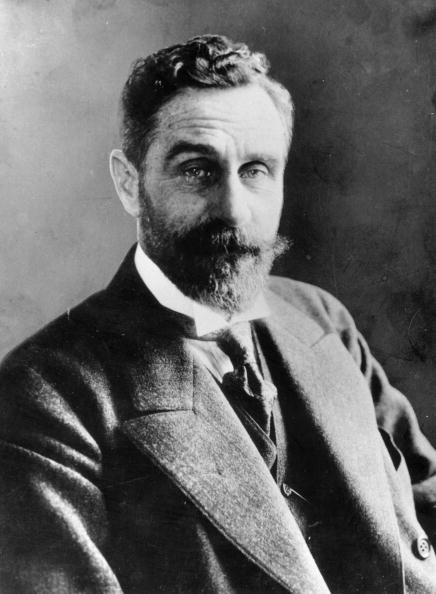
Prime Minister Roger David Casement, 1906
The Irish Volunteers:
The major forces of the Irish Citizens Force originally lead by trusted politicians Arthur Griffiths and James Connolly with supervision from Europan Major Antonio Iannucci the Irish Volunteers were formed explicitly to as the last line of defence and ran more like a weekend hobby than an actual armed force at the start, which was popular with Irish Catholic Middle Class. This would change in Easter 1909 during the Derry Riots in which Protestant Paramilitary forces would start a riot which spiralled out of control, with the police being rather ineffective at stopping the rioters. The Imperial Military wanted to send in Soldiers to crush but Arthur Griffiths managed to persuade them to send the Irish Volunteers instead to show the efficiency of the force. The Irish Volunteers would quickly deal with the rioters and the paramilitaries impressing the Imperial Government and the King who would award many members medals and gallantry awards for their service.

Colourised Photo of Protestant Paramilitary Forces, 1909
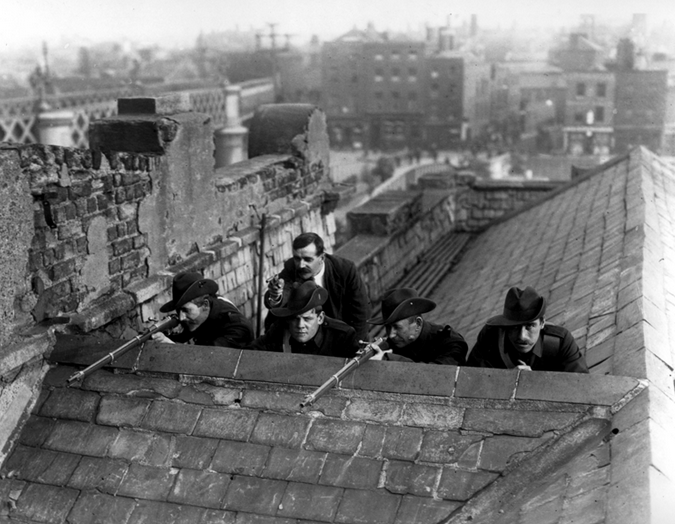
Irish Volunteers fire at Protestants, 1909
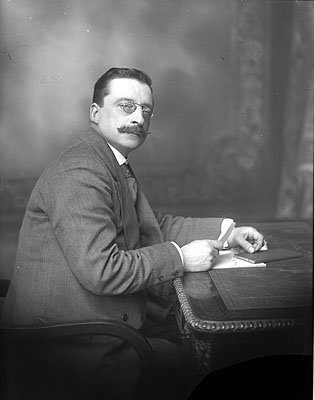
Arthur Griffth, 1910

Sir Arthur B. Yeats, 1911
The Women’s Defence League:
The strongest voice of the Irish Citizens Force was the Cumann na mBan or the Women’s Council who demanded for women to be allowed into the Irish Citizens Force due to the fact that they couldn’t they couldn’t join the Imperial Army. Roger Casement used the last of his good will with the king (Roger Casement was under investigation at the time for possibly committing sodomy, he would be found not guilty but the investigation would cause him to resign) to allow women to form their own element of the Citizens Force which formed as the Women’s Defence League lead by Costance Yeats and Muriel O’Conner. Many women would join up much to the horror of their husbands, with many enjoying the chance to become a possible fighter. There first real test would come during the Derry Riots in 1909 and Dublin Bombings in 1910 (a precursor of the Belfast Bombings) in which Constance Yeats and Nora O’Farrell would win the Dominic Cross for the courage in dealing with the Beuatlist terrorists.

Muriel O'Conner, 1910

Constance Yeats, 1910

Nora O'Farrell, 1911
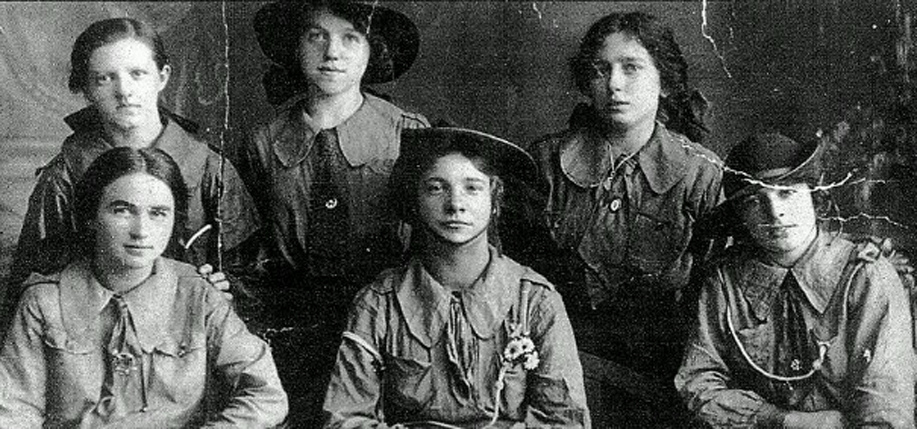
Women Defence League Members, 1911
The Irish Citizens Army:
Created in 1909 after an ideological split between James Connolly and Arthur Griffiths this small splinter group lead by James Connolly and Jack White was formed with help from new Prime Minister James Larkin who was friends with the pair and who despised Arthur Griffths due to his Anti-Union ideas. Despite being a smaller force it managed to do something that the Irish Volunteers hadn’t managed to do which was recruit a surprising amount of Irish Protestants and Working Class into their ranks. It helped that James Connolly was a popular politician due to his message of equal rights for all which applied to a large number of left leaning Irish Protestants who were discriminated against.

James Connolly, 1910

Jack White during the Derry Riots, 1909

The Aftermath of the Dominic Street Siege, 1910
Nora Connolly, 1910

Irish Citizen Army Members, 1910
Last edited:
YESSSSS! Ireland is sippin' that Madness now.
I also imagine that in this universe, Oscar Wilde stays in Ireland and is writing anti-anglo propaganda. A lot of about OTL Wilde is perfect material of the Madnessverse. He was fluent in french and german, his mother was an Irish nationalist of Italian descent, and his father was also a very well respected doctor and archaeologist. Maybe Wilde-ism can be the Marxism of Ireland?
I also imagine that in this universe, Oscar Wilde stays in Ireland and is writing anti-anglo propaganda. A lot of about OTL Wilde is perfect material of the Madnessverse. He was fluent in french and german, his mother was an Irish nationalist of Italian descent, and his father was also a very well respected doctor and archaeologist. Maybe Wilde-ism can be the Marxism of Ireland?
Sounds like a good idea, I'll maybe write about Wilde.YESSSSS! Ireland is sippin' that Madness now.
I also imagine that in this universe, Oscar Wilde stays in Ireland and is writing anti-anglo propaganda. A lot of about OTL Wilde is perfect material of the Madnessverse. He was fluent in french and german, his mother was an Irish nationalist of Italian descent, and his father was also a very well respected doctor and archaeologist. Maybe Wilde-ism can be the Marxism of Ireland?
For added Madness have him;
Be a lover of Pime Minister Roger David Casement and the discovery of love letters between the two is what leads to Casement's sodomy investigation.
Wilde is friendly with Jim Larkin which becomes problematic after the Great War.
A feud with the Yeats family leads to all sorts of slander being flung between the two.
Wilde and James Connolly get into a fist fight over politics and Wilde making snide remarks about Connolly (that would probably be the meanest thing that Connolly would ever do).
Wilde becoming friends with the King much to the horror of his Imperial Government and Military.
Share:
